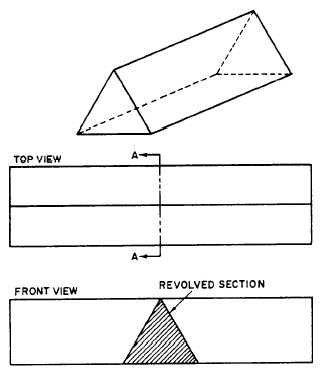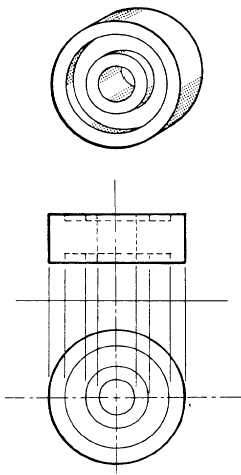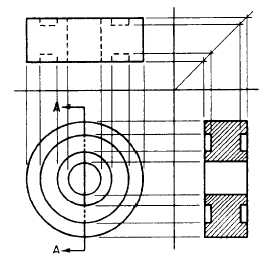Figure 5-29.-Use of a revolved section (A-A).
block would look if it were revolved 30 degrees
on an axis perpendicular to the horizontal plane.
Figure 5-28, view B, shows the block as it would
appear if it were revolved 30 degrees on an axis
perpendicular to the vertical plane.
REVOLVED SECTIONS.— A common use
of the revolution is the revolved section, shown
in figure 5-29. At the top of this figure, there is
a single projection of a triangular block. You can
show all required information about this block in
a two-view projection by including a revolved sec-
tion in the front view as shown. You first assume
that the block is cut by a plane perpendicular to
the longitudinal axis.
You then revolve the
resulting section 90 degrees on an axis per-
pendicular to the horizontal plane of projection.
SECTIONING TECHNIQUES.— A sectional
view is called for when the internal structure of
an object can be better shown in such a view than
it can by hidden lines. In the upperpart of figure
5-30, there is a single-view projection of a pulley.
The same object is shown below in a two-view
multi-view projection. The internal structure of
the pulley is shown by the hidden lines in the top
view.
In figure 5-31, the internal structure of the
pulley is much more clearly shown by a sectional
view. Note that hidden lines behind the plane of
projection of the section are omitted in the
Figure 5-30.-Internal structure of
hidden lines.
an object shown by
Figure 5-31.-Internal structure of an object more clearly
shown by sectional view.
5-18






